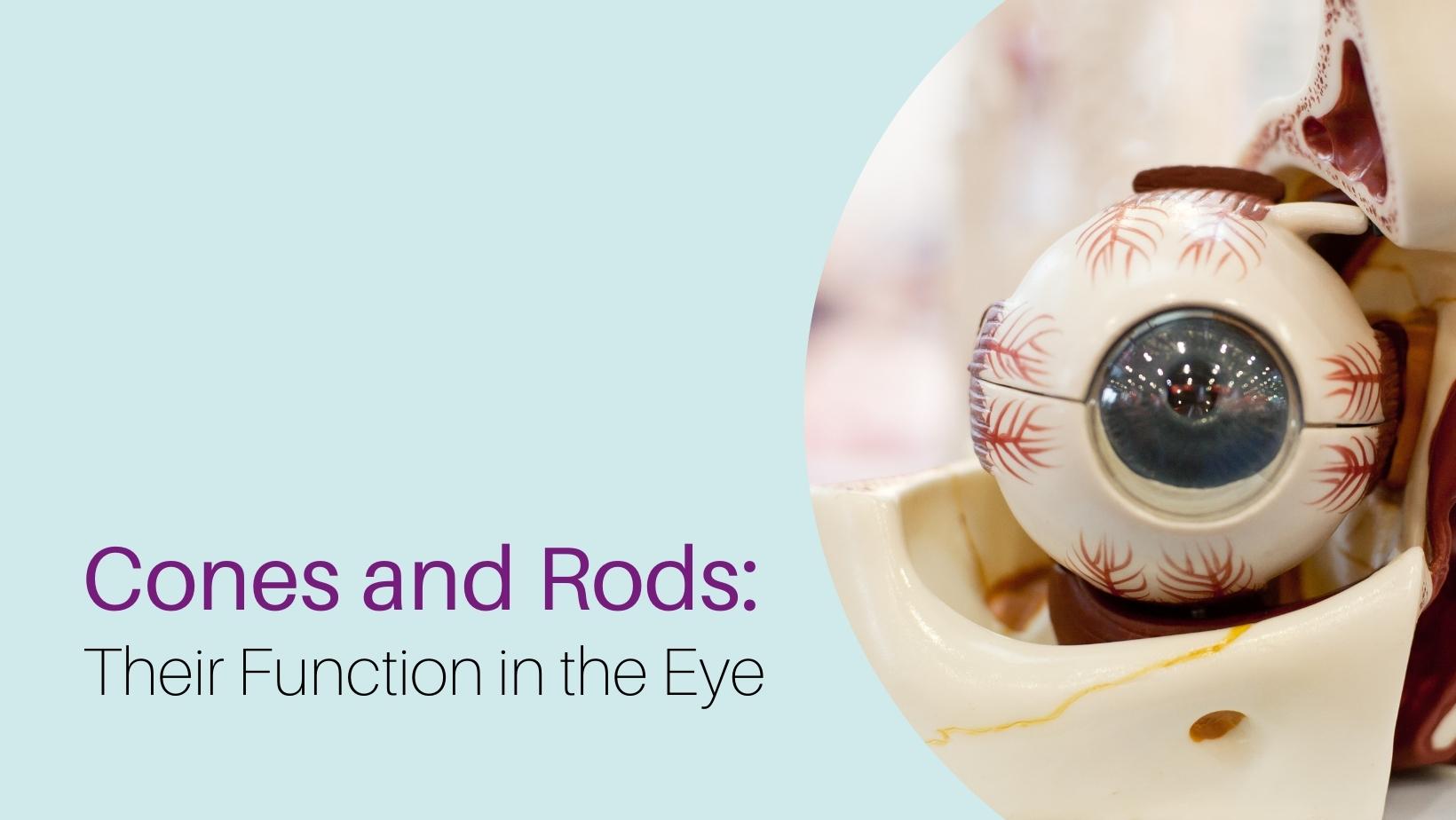How Cones and Rods Function in the Eye
How Cones and Rods Function in the Eye

Behind the brain, the eye is one of the most complex organs in the human body.
Not only do the eyes accomplish the feat of precise vision, but they are also remarkably small for what they accomplish. Many thousand small parts all work together in the eye to send images of the outside world to the brain.
The eye can process between 10 and 12 images per second and perceive each picture individually.
While there are many different components in the eye that allow humans to see, in this post we will focus on two of the most fascinating: the cones and rods.
Cones are for Color
Cones are the main color receptors in your eye. Along with the rods, they sit on your eye’s retina and perceive light.
Cones use three different types of photoreceptors. They are aptly named short, medium, and long-wavelength cones (also known as red, green, blue cones). Each type is responsible for detecting the lights and colors within its respective wavelengths.
Cones are the receptors that respond to light, while rods are the receptors that respond to the motion. Because of this, cones need a great deal more light to fire and send a signal to the brain. This is the reason that you cannot distinguish between different colors in the dark. In fact, your night vision is almost entirely black and white.
There are about 6 million cones in the human eye and they all work in harmony to help you see the fine details of your surroundings. Cones can generally be thought of as a precision tool, while the rods are blunter.
Rods are for Low Light
As we said above, while cones detect precision and color in light, rods are receptive to motion and cover the blacks and whites in our vision.
Rods are the reason we can see in the dark. They detect low levels of light and makeup what is called our scotopic vision (cones make up our photopic vision).
While cones give us more detailed information, rods are by far more sensitive. Rods are the reason you can see shapes in low levels of light and are responsible for our peripheral vision.
Rods do take about thirty minutes to fully adjust to darkness but are essential for seeing at night.
As we age, we lose both cones and rods. However, in many people, the degeneration of rods greatly outpaces the degeneration of cones. Consider this: when we are born our rods outnumber our cones by more than10-to-1. In an autopsy study of older adults, it was found that by the time we reach the grave over one-third of our rods have died.
The degeneration of rods is one of the reasons why older adults struggle to see at night. While there is not much an optometrist can do to prevent the natural decay of rods in your eye, they can give your glasses and other equipment to help make it easier to see at night.
Each rod has more individual receptors than our cones, and rods tend to exist at the peripheral of our vision. That means cones cluster at the center of our retinas, while rods live on the outskirts.
Even though the function of cones dominates what we think of like vision, there are over 90 million rods in the human eye, far more than the cones in both eyes combined.
Two Components of a System
While rods and cones are the two light receptors in our eyes, they make up just a fraction of the human eye. And since there are so many million rods and cones in each eye, they often do not contribute to major eye disorders.
Since the eye relies on so many different working parts, it is important to have your eyes examined regularly. There are many different things that can go wrong in the eye and key issues can develop before you are aware anything is wrong.
Schedule an appointment at Family Vision Care in Oxford today to ensure the health of your eyes for years to come.
